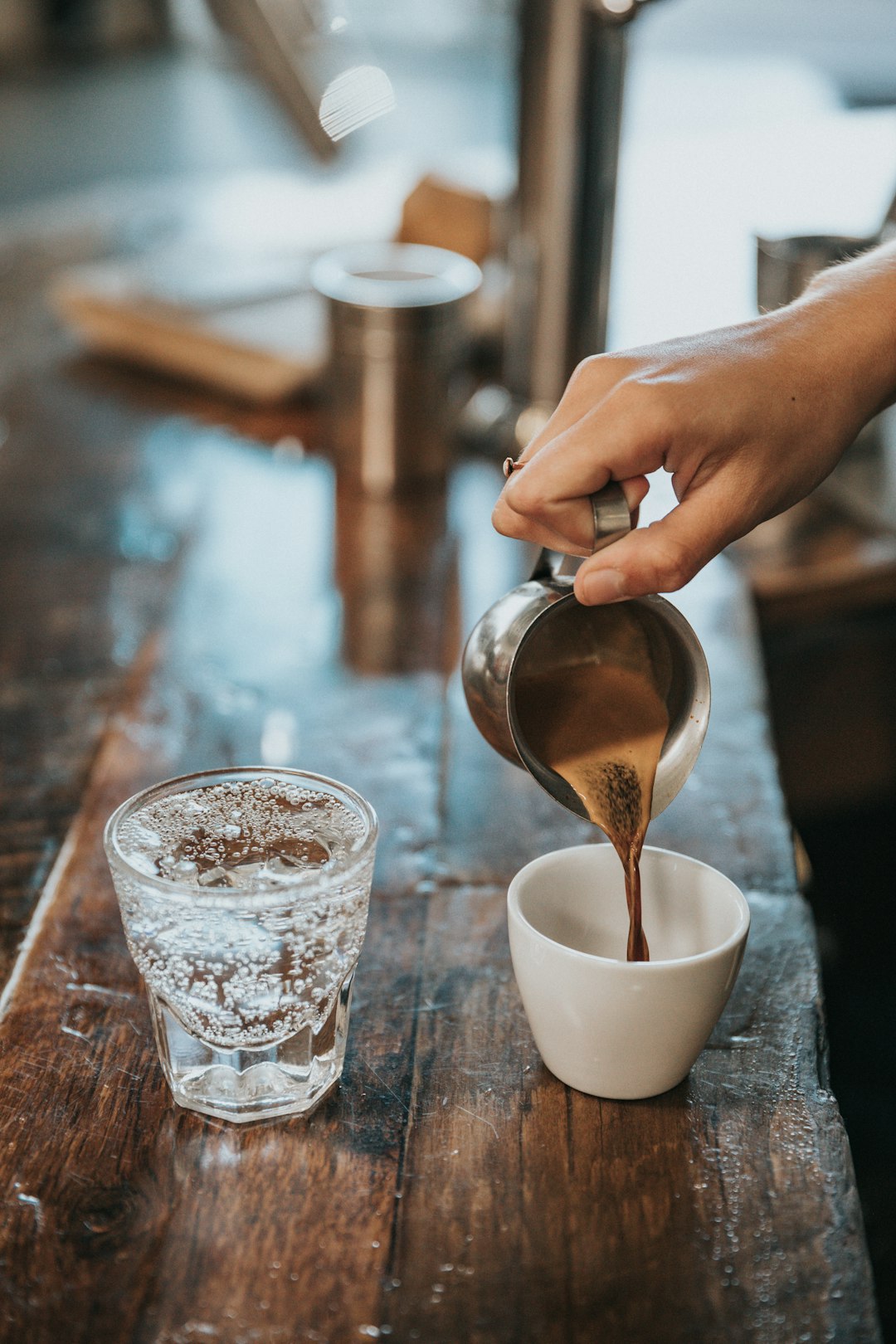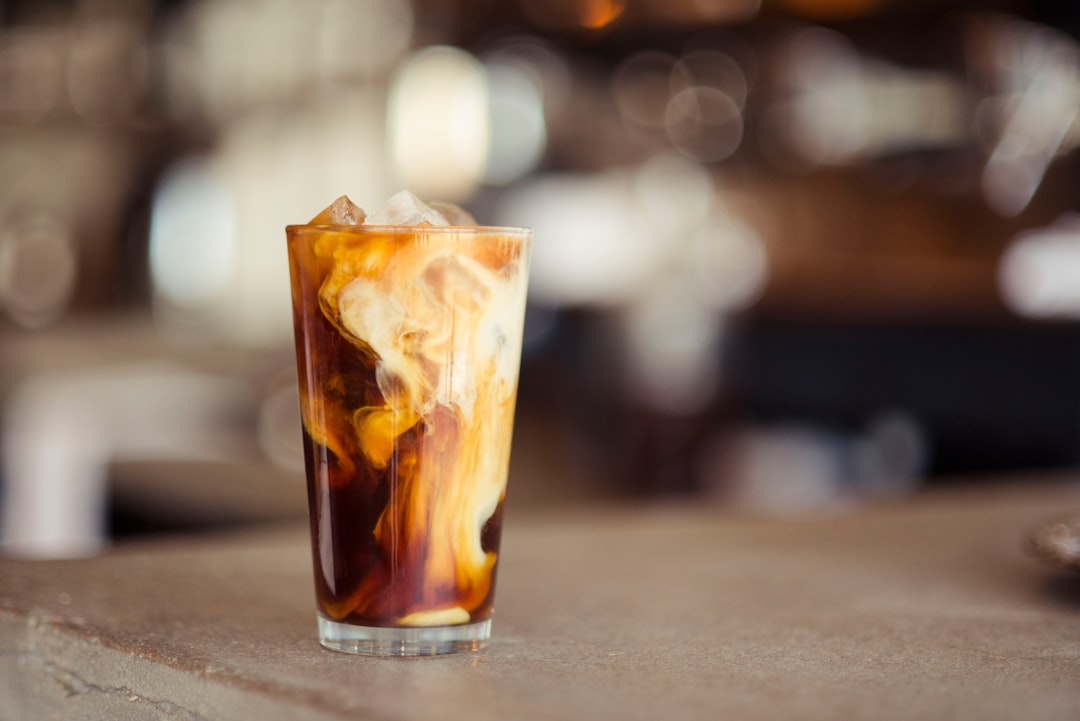Every year, coffee lovers unite to honor their favorite beverage on National Espresso Day. This special day not only highlights the rich history and cultural significance of espresso but also offers an opportunity for enthusiasts to broaden their appreciation for this beloved coffee method. From the origins of the espresso shot to the diverse range of delicious espresso-based drinks, there’s much to explore. As we dive into the essence of espresso, we’ll also uncover brewing techniques, equipment, and even health benefits that make it a staple in coffee culture worldwide. Join us on this flavorful journey and discover exciting ways to celebrate and connect with fellow espresso aficionados!
What is National Espresso Day?
Celebrated annually, National Espresso Day is a tribute to one of the most beloved coffee preparations worldwide. Observed on November 23rd, this day serves as a delightful reminder for coffee lovers to indulge in the rich, bold flavors of espresso. But what exactly is espresso?
Espresso is a concentrated coffee beverage brewed by forcing hot water through finely-ground coffee beans under high pressure. This process creates a thick, rich liquid topped with a golden crema, a hallmark of a well-made espresso shot. With its strong taste and inviting aroma, espresso forms the foundation for a variety of coffee drinks.
Key Characteristics of Espresso
| Feature | Description |
|---|---|
| Brew Method | Pressure brewing technique |
| Flavor Profile | Rich, intense, and robust |
| Serving Style | Typically served as a single or double shot |
| Caffeine Content | Higher concentration in smaller volume |
| Base for Other Drinks | Foundation for lattes, cappuccinos, mochas, etc. |
This special day encourages coffee enthusiasts to explore espresso’s versatility, from simple shots to complex concoctions. Coffee shops and cafes often offer promotions and tastings, inviting patrons to experience the joy of espresso.
Moreover, it presents an excellent opportunity for both seasoned baristas and home brewers to elevate their brewing techniques, experiment with different types of beans, and enhance their appreciation for this coffee art form. So grab your favorite cup, and let’s raise a toast to this fantastic brew!

The History Behind National Espresso Day
The roots of National Espresso Day delve deep into the rich history of espresso itself, a beverage that has evolved over centuries to become a staple in coffee culture worldwide. Understanding its origins and the journey it has taken to garner a dedicated celebration can enhance our appreciation for this beloved drink.
Key Historical Milestones:
| Year | Event |
|---|---|
| 1901 | The first espresso machine, Il Galleria, is patented in Italy. |
| 1933 | The Espresso Italiano, a standardized coffee brewing method, emerges. |
| 1946 | The first true espresso machine is created, revolutionizing espresso preparation. |
| 1983 | The first National Espresso Day is established, highlighting the drink’s significance. |
Espresso originated in Italy during the early 20th century, primarily as a quick method to brew coffee for busy consumers. The name itself reflects its intended purpose: “espresso” means “pressed out” in Italian, indicating the forceful extraction of flavors and aromas from coffee beans. This brewing method quickly gained popularity, leading to the proliferation of coffee shops that began to pop up across Europe.
By the mid-20th century, espresso had firmly cemented its status in coffee culture. Post World War II, the machine’s evolution allowed for enhanced efficiency and consistency, ultimately leading to the diverse espresso-based drinks we enjoy today. The establishment of National Espresso Day in 1983 served as an acknowledgment of espresso’s cultural significance and a celebration of its impact on coffee enthusiasts everywhere.
Understanding this historical context not only enhances appreciation for the beverage but also connects us to a global community of coffee lovers who celebrate the joy of espresso.
The Significance of Espresso in Coffee Culture
Espresso is more than just a coffee drink; it embodies a rich cultural experience. As quoted by coffee aficionados, “Espresso serves as the soul of coffee culture, connecting people through its rich flavors and traditions.” This deep-rooted significance manifests in several key aspects.
The Heart of Social Interaction
Espresso has long been a bridge for social engagement. In countless cafés around the world, friends gather over a cup, sparking conversations and fostering community. It transforms a simple coffee break into a cherished ritual, where the aroma and taste evoke shared memories.
A Culinary Foundation
Espresso serves as the base for a plethora of beloved coffee drinks. From lattes to macchiatos, the versatility of espresso makes it a staple in various culinary creations. Its concentrated flavor profile enhances the overall taste experience, proving essential in the art of coffee crafting.
Symbol of Quality and Craftsmanship
The meticulous process of brewing espresso highlights the craft of coffee making. With several brewing techniques and intricate details involved, high-quality espresso becomes a symbol of dedication. Baristas dedicate years to perfecting their skills, emphasizing the artistry behind each shot.
Cultural Variations
Globally, espresso is celebrated in diverse ways. In Italy, it’s a quick drink enjoyed at the bar, while in Sweden, it’s part of the “fika” tradition—an essential coffee break that emphasizes connection.
Table of Popular Espresso Drinks
| Drink | Description |
|---|---|
| Espresso | A concentrated coffee served in shots, forming the essence of coffee. |
| Americano | Espresso diluted with hot water for a milder flavor. |
| Cappuccino | Equal parts espresso, steamed milk, and milk foam, often topped with chocolate. |
| Macchiato | Espresso mixed with a small amount of steamed milk. |
With all its cultural significance, espresso remains a pillar in the world of coffee. It celebrates tradition while continually evolving, uniting coffee enthusiasts across the globe.
How Espresso Became a Global Phenomenon
Espresso, a small but powerful coffee beverage, has taken the world by storm, evolving from humble Italian origins to a global sensation enjoyed by millions. The journey of espresso from local cafés in Italy to international chains is a remarkable tale of flavor, culture, and innovation.
Key Milestones in the Espresso Journey
| Year | Event | Impact |
|---|---|---|
| 1901 | Introduction of the espresso machine | Enabled the rapid brewing of coffee under pressure |
| 1940s | Popularity surge in post-war Italy | Became a staple at social gatherings and bars |
| 1980s | Rise of specialty coffee culture | Focus on quality and brewing techniques |
| 2000s | Global expansion through coffee franchises | Accessibility and familiarization with espresso styles |
The invention of the espresso machine revolutionized coffee preparation, creating a strong and concentrated brew that quickly became popular in cafés. After World War II, returning soldiers brought their Italian coffee experiences home, sparking a renewed interest and setting the stage for espresso’s popularity in various cultures.
Moreover, the emergence of specialty coffee in the 1980s emphasized artisanal methods of preparation, leading to a deeper appreciation of the espresso craft. As coffee enthusiasts sought unique flavor profiles, espresso became a canvas for creativity, inspiring many variations like the macchiato and cappuccino.
Today, global brands have embraced and adapted espresso, intertwining it with the fabric of society. Whether it’s enjoyed as a quick morning pick-me-up or an elaborate after-dinner treat, its presence is undeniable. As more coffee lovers discover the art of brewing and tasting, espresso continues to win hearts, solidifying its status as a beloved beverage worldwide.

Popular Espresso Based Drinks to Celebrate
Celebrating with espresso-based drinks is a delightful way to pay homage to this beloved coffee preparation. From classic staples to innovative concoctions, there’s a wide variety of options for every caffeinated enthusiast. Below is a table outlining some of the most popular espresso drinks that you can enjoy on this special day:
| Drink | Description | Key Ingredients |
|---|---|---|
| Espresso | A concentrated shot of coffee served in small quantities. | Finely ground coffee, water |
| Americano | Espresso diluted with hot water, offering a milder taste. | Espresso, hot water |
| Latte | Smooth and creamy, made with espresso and steamed milk. | Espresso, steamed milk, milk froth |
| Cappuccino | Equal parts espresso, steamed milk, and milk froth. | Espresso, steamed milk, milk froth |
| Macchiato | An espresso “stained” with a splash of steamed milk. | Espresso, a dash of steamed milk |
| Flat White | Similar to a latte but with a higher ratio of coffee to milk. | Espresso, microfoam |
| Mocha | A chocolate-infused espresso drink topped with whipped cream. | Espresso, chocolate, steamed milk |
Each of these drinks showcases the versatility of espresso, inviting you to experiment with flavors and textures. Whether you prefer the simplicity of a straight shot or the indulgence of a mocha, there’s something for everyone to enjoy. Pair these beverages with some delicious pastries or a light snack, and transform your celebration into a true coffee experience.
Don’t forget, the journey to perfecting these drinks can also be a fun way to connect with fellow coffee enthusiasts. Try making these popular drinks at home or visit your local café to explore new flavors. Cheers to a wonderful celebration!
The Art of Brewing the Perfect Espresso
“Mastering the art of brewing espresso is not just about technology; it’s about passion and precision.”
Brewing the perfect espresso involves a delicate balance of technique and equipment. A consistent and rich extraction can elevate your coffee experience to new heights. Here’s how to transform your home brewing process.
Key Elements for Quality Espresso
| Element | Importance |
|---|---|
| Grind Size | A fine, even grind allows for optimal extraction. |
| Water Quality | Always use filtered water to avoid unwanted flavors. |
| Temperature | Aim for 195°F to 205°F to achieve ideal brewing conditions. |
| Pressure | Use 9 bars of pressure for the perfect shot. |
| Brew Time | Extracting between 25-30 seconds helps achieve the right flavor profile. |
Techniques for Brewing
- Tamping: Apply even pressure when tamping the coffee into the portafilter. An uneven tamp can lead to channeling, which affects extraction.
- Start with Fresh Beans: Always use freshly roasted beans. This enhances flavor and aroma, ensuring a delightful experience.
- Regular Maintenance: Keep your espresso machine clean. Regularly descale and wash components to prevent any off-flavors.
- Experiment: Adjust grind size, tamping pressure, and brewing time. Learning to modify these elements will help develop your unique espresso style.
By focusing on these crucial factors and techniques, you can achieve that coveted espresso shot reminiscent of your favorite café. Whether you are a coffee connoisseur or simply a home enthusiast, embracing the art of brewing espresso can lead to delightful moments filled with rich, bold flavors.
Espresso Machines: A Guide for Home Baristas
Choosing the right espresso machine is crucial for any home barista looking to perfect their brewing skills. With numerous options available, it’s essential to understand the different types of machines and their unique features. Below is a comparison of popular espresso machines that can help you elevate your coffee game.
| Type of Machine | Best For | Price Range | Features |
|---|---|---|---|
| Manual | Experienced baristas | $100 – $1,500 | Hands-on control and personalization |
| Semi-Automatic | Intermediate users | $300 – $2,000 | User-friendly with programmable settings |
| Fully Automatic | Beginners | $400 – $3,000 | One-touch brewing with minimal effort |
| Pod Machines | Convenience seekers | $100 – $300 | Quick, no-mess options using coffee pods |
| Super-Automatic | Busy individuals | $800 – $5,000 | All-in-one machines with built-in grinders |
Choosing the Right Machine
When selecting an espresso machine, consider what best fits your daily routine and desired level of involvement in making espresso. Manual machines offer the most control, allowing baristas to fine-tune factors like pressure and extraction time. However, if you’re looking for convenience, a fully automatic machine will let you brew with minimal effort.
Maintenance is Key
Regardless of the machine you choose, regular maintenance is essential to preserve quality and longevity. Clean your machine after each use, descaling it periodically to remove mineral buildup. This proactive approach not only ensures consistent flavor but also enhances the lifespan of your equipment.
Investing in the right espresso machine is an excellent way to deepen your appreciation for coffee. Whether you’re experimenting with your favorite roast or honing your brewing skills, the right tools will help you savor each cup to its fullest.

Exploring Different Types of Espresso Beans
When it comes to crafting the perfect espresso, the choice of beans plays a pivotal role. Various types of espresso beans lend unique flavors, aromas, and characteristics, enriching your coffee experience. Here’s a breakdown of popular espresso beans that every coffee enthusiast should consider:
| Bean Type | Flavor Profile | Origin |
|---|---|---|
| Arabica | Sweet, fruity, and soft | Latin America |
| Robusta | Strong, earthy, and bitter | Africa, Southeast Asia |
| Liberica | Unique, floral, and woody | West Africa |
| Excelsa | Dark, fruity, and tart | Southeast Asia |
Key Types of Beans:
- Arabica Beans: Renowned for their smooth and nuanced flavors, Arabica beans are the most popular type used in espresso. These beans usually have a lower caffeine content compared to Robusta and are often favored for their complexity and sweetness.
- Robusta Beans: These beans pack a punch with their bold, often bitter flavor. Robusta beans contain more caffeine, making them ideal for those who enjoy a strong coffee kick. They’re fantastic for blending with Arabica to create a balanced espresso.
- Liberica Beans: With their unusual shape and distinctive aroma, Liberica beans offer a unique tasting experience that’s less common among mainstream coffee drinks. They bring a fragrant, fruity flavor, perfect for adventurous palates.
- Excelsa Beans: Although not widely known, Excelsa beans provide a tart, fruity flavor that can enhance espresso blends. They contribute depth and complexity to coffee, appealing to those seeking something different.
Choosing the right bean can elevate your espresso experience, whether you’re brewing at home or enjoying a cup at a coffee shop. So, dive into the world of espresso beans and discover the flavors that excite your taste buds!
The Health Benefits of Espresso
“Coffee lovers unite! Espresso is not only a delicious pick-me-up but also comes with a variety of health benefits.”
Nutritional Benefits of Espresso
Espresso is a concentrated form of coffee that packs a punch in both flavor and nutrients. It contains essential vitamins and minerals such as:
| Nutrient | Amount per 1 oz (30ml) |
|---|---|
| Niacin (Vitamin B3) | 0.25 mg |
| Riboflavin (Vitamin B2) | 0.03 mg |
| Magnesium | 6 mg |
| Antioxidants | High |
Enhancing Mental Alertness
One of the most well-known benefits of espresso is its ability to enhance mental alertness and improve cognitive function. According to research, the caffeine in espresso can increase focus and concentration. With just a small shot, consumers often feel more energized and ready to tackle tasks throughout the day.
Heart Health
Moderate consumption of espresso has been linked to potential cardiovascular benefits. Studies suggest that it may reduce the risk of certain heart diseases due to its anti-inflammatory properties. In fact, a review noted that regular espresso drinkers had a lower risk of heart rhythm disorders.
Supporting Metabolism
Espresso can also play a role in boosting metabolism. The caffeine present may increase the metabolic rate by up to 11% for a short term, promoting fat burning. This makes it a popular choice for those looking to enhance their fitness routines.
Overall, while it’s essential to enjoy your espresso in moderation, embracing this delightful beverage can contribute positively to both your health and your daily routine. So why not pour yourself a shot and enjoy the benefits?
Espresso Tasting: Tips for the Best Experience
Espresso tasting is an art that allows coffee lovers to fully appreciate the complex flavors and aromas of their brew. To ensure you have an enjoyable and memorable experience, consider the following tips:
| Tip | Details |
|---|---|
| Choose Quality Beans | Start with high-quality, freshly roasted beans. Look for single-origin beans or blends known for their distinct flavor profiles. |
| Proper Grinding | Grind the coffee just before brewing to preserve its freshness. A fine grind is typically recommended for espresso, ensuring proper extraction during brewing. |
| Use the Right Temperature | Water temperature plays a vital role. Aim for around 195°F to 205°F (90°C to 96°C) to extract the best flavors without burning the coffee. |
| Pay Attention to Pressure | A good espresso shot requires consistent pressure. Maintain around 9 bars of pressure during extraction to achieve that rich, crema-topped coffee. |
| Savor the Flavor | Take a moment to enjoy the aroma before tasting. Swirl the espresso lightly in your mouth to engage your taste buds and explore the various flavor notes. |
| Enjoy the Texture | Notice the body and mouthfeel of the espresso. A well-made shot should have a creamy, velvety texture that adds to the overall sensory experience. |
By following these essential tips, you can elevate your espresso tasting sessions, enhancing both your appreciation and enjoyment of this beloved beverage. Remember, each sip is a celebration of the unique qualities that espresso has to offer, making it a perfect occasion for any coffee enthusiast!
Fun Ways to Celebrate National Espresso Day
Celebrating a day dedicated to espresso can be an enjoyable experience for coffee lovers. Here are some creative ideas to make the most of this special occasion:
| Activity | Description |
|---|---|
| Organize a Tasting Party | Invite friends or fellow coffee enthusiasts to sample various espresso drinks. Include tasting notes for a fun and educational experience. |
| Attend Local Events | Check your community calendar for coffee-related events, such as tastings, workshops, or café promotions that celebrate espresso. |
| Explore Unique Recipes | Try your hand at brewing espresso-based drinks, experimenting with flavors like vanilla, hazelnut, or caramel to create a personalized treat. |
| Visit Your Favorite Café | Support local businesses by indulging in your favorite espresso drink while enjoying a relaxed atmosphere. |
| Social Media Celebrations | Share your espresso moments on social media using the day’s hashtags. Post photos and experiences to connect with other coffee lovers. |
| Learn About Espresso | Spend part of the day researching espresso history and brewing techniques. Diversifying your knowledge enriches your appreciation for this beloved beverage. |
| Gift Coffee-Related Items | Surprise a coffee enthusiast with an espresso-themed gift, such as a high-quality coffee grinder or an espresso recipe book. |
By engaging in one or more of these activities, you can deepen your appreciation for espresso while enjoying the day with friends and family. Embrace the spirit of togetherness and celebrate this iconic coffee beverage in style!
Connecting with Fellow Coffee Enthusiasts
“Coffee is a language in itself.” This sentiment rings true for many who share a passion for brewing and tasting exquisite coffee, particularly espresso. National Espresso Day serves as the ideal occasion to connect with fellow coffee enthusiasts, whether through local events, online forums, or social media platforms.
Community Meetups
Many cities host coffee meetups around National Espresso Day, allowing aficionados to gather, share experiences, and discuss their preferred brewing methods. Participating in these events can enhance your appreciation for espresso, as you engage with both novice drinkers and seasoned baristas. Here are some benefits of attending these gatherings:
| Benefits of Community Meetups | Details |
|---|---|
| Knowledge Sharing | Learn new brewing techniques from experts. |
| Tasting Opportunities | Sample different espresso-based beverages. |
| Networking | Meet local coffee shop owners and roasters. |
| Inspiration | Discover new recipes and coffee trends. |
Online Connections
For those unable to attend in-person events, online communities can be equally enriching. Platforms like Reddit, Facebook Groups, and Instagram allow you to share your espresso creations and receive feedback. Additionally, many coffee brands host live-streamed tastings or Q&A sessions on social media, making it easy to engage from the comfort of your home.
Espresso Tasting Parties
Host an espresso tasting party to introduce friends and family to the world of espresso. By providing a selection of beans, along with different brewing techniques, you can help others cultivate their love for this robust beverage. Offer tasting cards to record observations, fostering a collaborative atmosphere where everyone can express their preferences.
In essence, connecting with fellow coffee enthusiasts around National Espresso Day can significantly enrich your espresso experience, creating lasting bonds built on a shared love for this quintessential beverage.


